A few days ago we unboxed this coming season’s (07/08) Silvretta Pure Freeride. While substantially the same binding as last year’s offering, this model has several significant improvements that make it much more viable a choice for backcountry skiing. Check it out.
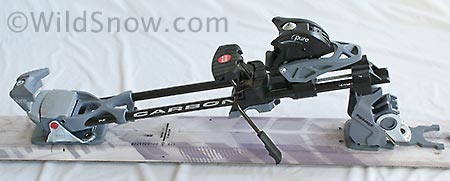
New 07/08 Silvretta Pure Freeride is similar to last year’s model but with significant improvements.
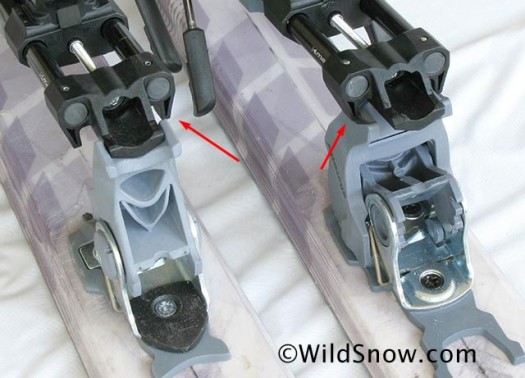
Last year's heel clamp to left, this year's on right is much beefier and has an extra 'double action' that allows it to tilt farther forward in touring mode, thus providing more support for the small tongue of black plastic that supports the binding plate while you're touring. Click image to enlarge, which shows this improvement in more detail.
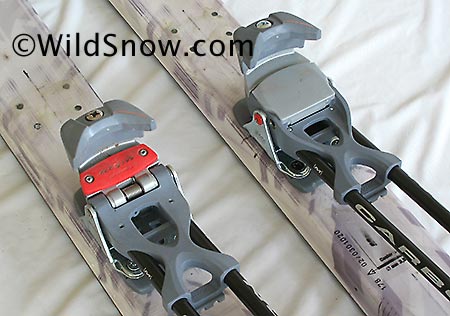
Side by side comparo of toe units, new one on right. They look slightly different, but in function are significantly different.
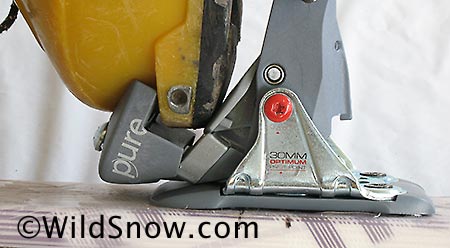
Silvretta Pure Free toe flex.
Here is what’s different about the new toe: It has a way of hinging that allows more forward angle when the binding plate and boot are taken to max forward angle in touring mode, which occurs when you fall forward in touring mode (a “knee fall”). The idea is to prevent a knee fall from damaging the binding. On the bench, it looks like this might work as the point of binding damage is well beyond the angle where your knee hits the ski or snow surface. While this sort of damage is uncommon it did occur with earlier Pure bindings, so curing this failure mode is in my opinion a significant improvement.
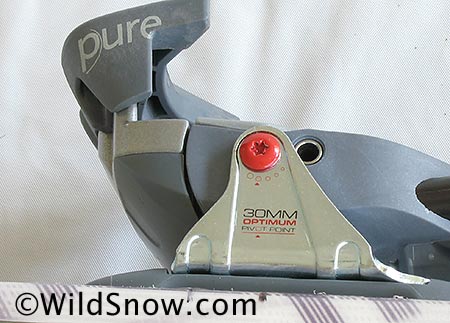
The improvements continue, and this is the killer feature.
Any backcountry skier worth their avy beacon has worn out the pivot on a plate binding. Often you’re out of luck when this happens, as many AT bindings have a pivot that’s not user serviceable. But with the new Pure you’re totally set, as the pivot axle and bushings are easy to remove and replace by backing off the red star-drive screws on the side and popping the front of the plate out of the bracket.
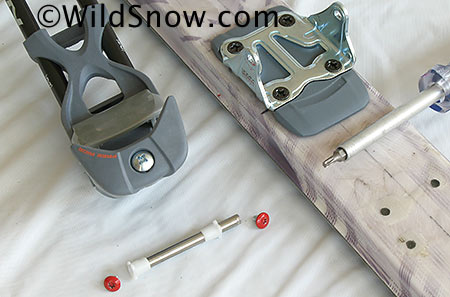
Toe axle and bushings removed for refurb. Takes just a few minutes to R&R. Very nice.
There you go, a significantly changed and improved Pure Freeride for this coming season. Downside is the binding has gained weight, and at 35.4 ounces (1002 gr) per binding is only .6 ounces (20 gr) less than a Fritschi Freeride Plus, and is still not quite as laterally stable (meaning resistance to boot cuff forced left/right). So why pick the Pure Freeride over a Fritschi Freeride? I’d say the main reason is tourability. Pure’s big selling point is that the touring pivot is back farther toward the ball of your foot than any other binding, thus providing a natural stride only the Naxo can match or exceed. While this is not a big factor for steep fall-line climbing, it makes a huge difference during low angled tours.
Other shopping options: Remember the Silvretta Pure X-Mountain model is intended as an “entry level” option that’ll presumably be one of the more affordable AT bindings on the market. And don’t forget the Pure Kidz model if you need a binding short enough for a child’s boots. As for something lightweight, the Silvretta Pure Performance model of the Pure line uses hollow carbon rails and more aluminum resulting in quite a bit less heft than the Pure Freeride. We don’t have a real-world weight for the Performance, but last year’s weight should be close (see Silvretta info in menu to left.)
As for the controversial Pure caveats I blogged a while ago, I’d say this binding and presumably the other 07/08 Pures (which have similar new features*) are improved and thus would require less shopper caution. That said, the crop of new Pure models has not received the ever telling North American consumer abuse testing, so I’ll reserve final judgment until next winter’s early adopters start sending me their emails. Also, I’ll go ski on the binders to keep it real and report back once that’s done.
*(As far as I know, all Pure models have the improved heel clamp and improved toe, though the X-Mountain lacks the serviceable pivot bushings.)

Silvretta Pure Free thumbnail.
WildSnow.com publisher emeritus and founder Lou (Louis Dawson) has a 50+ years career in climbing, backcountry skiing and ski mountaineering. He was the first person in history to ski down all 54 Colorado 14,000-foot peaks, has authored numerous books about about backcountry skiing, and has skied from the summit of Denali in Alaska, North America’s highest mountain.
